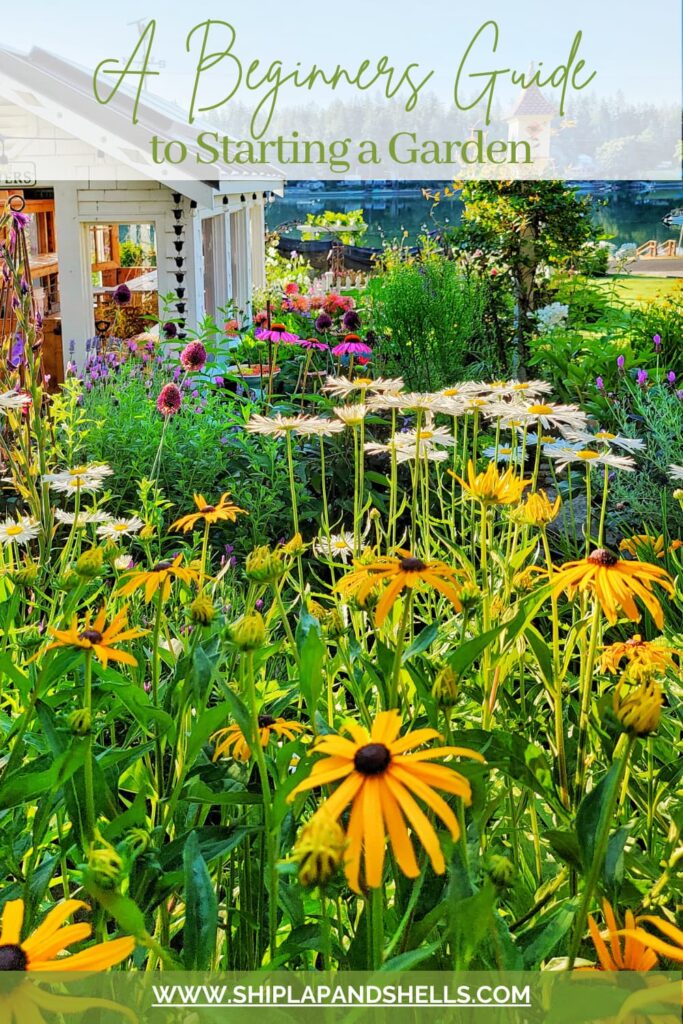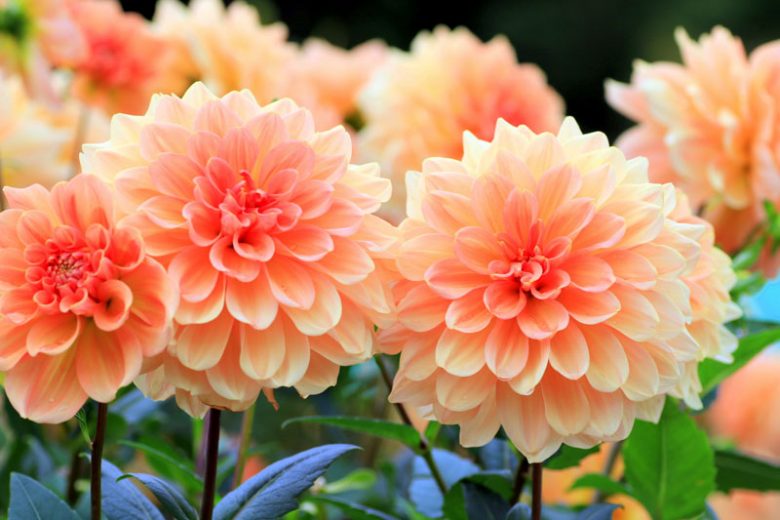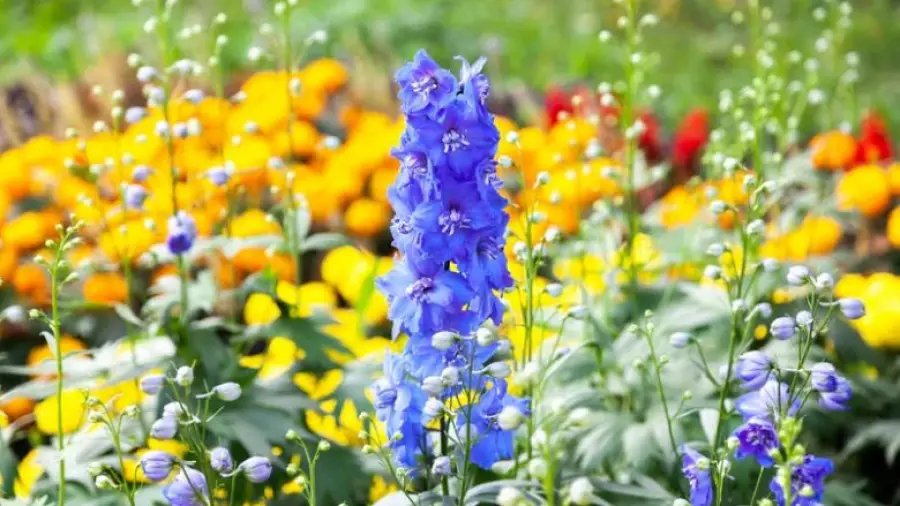Embrace vibrant summer gardens with the right techniques and planning. Master the art of summer gardening to enhance your outdoor space.
The buzz of life returns to gardens in the summer, demanding a gardener’s touch to thrive. Summertime brings a unique set of gardening activities, from selecting the perfect location to cultivating rich soil for your plants. Aspiring green thumbs and seasoned gardeners alike prepare for a season of growth and beauty.
Summer Gardening How-To Guide: Essential to this preparation is understanding the effects of intense sun and heat on your garden, ensuring regular maintenance, and being proactive about pest control. Plant selection during this time is critical; opting for heat-resistant and drought-tolerant varieties can make the difference between a flourishing garden and a withering one. With a precise plan, appropriate tools, and a passion for nurturing the earth, any gardener can transform their space into a summer sanctuary that’s both lush and sustainable.
Table of Contents
Choosing Your Summer Garden Location
Selecting the optimal spot for your summer garden is pivotal for yielding a flourishing bounty. Ensure ample sunlight and well-draining soil to maximize plant health and productivity in your seasonal horticultural endeavors.
Assessing Soil Qualitycrucial for garden success. A healthy soil should be rich in nutrients and have good drainage. You can test soil drainage by soaking an area with water and watching how quickly it drains. For soil richness, a simple at-home test kit can determine nutrient levels and pH. Amend the soilimprove plant health. Yearly testing is best as soil can change over time.
Planning Your Garden Layout
A successful garden starts with great planning. Consider the space available and sketch your design on paper. Ensure each plant has enough room to grow. Use graph paper to draw your garden to scale.
Think about companion planting; some plants grow better together. For example, tomatoes love basil and marigolds. This can also help reduce pests without chemicals.
| Plant | Companion | Avoid |
|---|---|---|
| Tomatoes | Basil, Marigold | Cabbage |
| Carrots | Peas, Onions | Dill |
| Peppers | Spinach, Eggplant | Fennel |
Plan your garden layout by optimizing for plant height and size. Taller plants like corn should not block the sun for smaller plants. Short plants can be in the front. This way, all plants get sunlight.
Selecting Summer Garden Plants
Warm weather means a bounty of vegetables and fruits can thrive in your summer garden. Tomatoes, peppers, cucumbers, and squash are all excellent choices. They love sunshine and grow well in the heat. Eggplants and beans are also perfect for a continuous harvest. Don’t forget about strawberries and melons for a sweet treat!
Your garden can buzz with life as herbs and flowers attract pollinators. Consider planting basil, mint, and lavender. Sunflowers, zinnias, and marigolds will not only add splashes of color but also invite bees and butterflies. For a garden that keeps on giving, try succession planting. Plant seeds at different times for veggies all season long.
| Herb/Flower | Pollinators Attracted | Planting Tip |
|---|---|---|
| Basil | Bees | Full sun, moist soil |
| Lavender | Butterflies, bees | Well-drained soil, little water |
| Marigold | Bees | Bright, indirect light |

Credit: shiplapandshells.com
Preparing Garden Beds
Begin by clearing any debris from the soil. Remove weeds, rocks, and dead plants. This creates a clean slate for new growth.
Soil enrichment is crucial. Mix in compost or manure to feed the soil. This boosts the nutrients that plants need to thrive.
Apply a layer of mulch around your plants. This helps in retaining moisture and keeps roots cool. A perfect trick for hot summer days!
Planting Techniques For Success
Effective planting techniques ensure a bountiful summer garden. Sowing seeds directly into the soil is an organic start to plant life. Yet, transplanting young plants offers a head start on growth. Each method has its unique benefits.
The key to success lies in proper depth and watering. Seeds need shallow burial, yet deep enough to moisten without washing away. Seedlings require firm soil contact around roots and regular watering. Ensure adequate hydration for a strong start.
For climbers and tall plants, DIY trellises and supports are essential. Simple structures can be made from wooden stakes and twine. This approach maximizes vertical space and improves air circulation. Healthy plants result from stable and secure supports.

Irrigation Strategies
Craft a lush summer oasis with strategic irrigation methods outlined in our Summer Gardening How-To Guide. Discover efficient watering techniques that ensure your plants thrive during the hot season without wasting precious resources.
Early morninglate afternoon are best for watering plants. This reduces water evaporation and aids in preventing plant diseases. Regular checks on soil moisture levels are vital.
drip irrigation, lay tubing alongside plants with emitters at the base. This targets water directly to the roots, minimizing waste.
need less water also help conserve. Using rain barrels to collect water for garden use is another smart move. Always remember, watering deeply but less frequently promotes strong root growth.
Pest And Disease Management
Gardeners love to see their plants grow, but unwanted visitors can be a problem. Natural pest deterrents like marigolds and garlic keep bad bugs away.
To spot common diseases, look for spots on leaves or stunted growth. These signs are a call for help. Learn what each sign means to save your plants.
Organic control methods are safe and effective. Try using neem oil or insecticidal soap. Always follow the directions for the best results. Your plants deserve care!
:max_bytes(150000):strip_icc()/starting-flower-garden-lead-getty-0323-2000-dcd1fcc5da044a3a9e1d3079625d98e2.jpg)
Credit: www.marthastewart.com
Garden Maintenance And Care
Maintaining a garden requires regular weeding to prevent unwanted plants from taking nutrients. Remove weeds by hand or with tools, ensuring to get the roots.
Pruning and deadheading encourage growth and blooms in plants. Cut away dead or overgrown branches and flowers regularly for a tidy garden.
It’s key to monitor plant health closely. Look out for signs of disease or pests and act quickly. Healthy plants need less water and resist illness better.
Harvesting Your Bounty
The perfect time to harvest varies with different crops. Look for signs of peak ripeness. Tomatoes shine bright red and peppers feel firm when they’re ready. Lettuce and greens need picking before they wilt in summer heat.
Storing your harvest keeps veggies fresh. Use crates for root vegetables and keep them in a cool, dark place. Freeze berries and blanch veggies before freezing. This locks in flavor and nutrients.
Seed saving is a smart move for next year. Choose healthy plants and allow a few fruits to overripe. Then, extract and dry the seeds. Store them in a cool, dry place. Label with the plant type and the date.
Expanding Beyond Vegetables
Ornamental plants enhance garden beauty. Try roses and hydrangeas for vibrant blooms. Lavender offers soothing fragrance.
Edible flowers like nasturtiums and calendula add color to salads. They are easy for kids to plant.
| Wildlife | Plants to Attract |
|---|---|
| Bees | Sunflowers, Bee Balm |
| Butterflies | Milkweed, Butterfly Bush |
| Birds | Sunflowers, Berries |
Place birdbaths and feeders. They encourage birds to visit. Your garden will buzz with life.
Frequently Asked Questions On Summer Gardening How-to Guide
How Do I Organize My Summer Garden?
Plan your garden layout, considering sunlight and soil quality. Select a full-sun spot with rich soil. Space plants according to their needs. Regularly weed and water. Use pest and disease prevention.
How Do You Start A Summer Garden?
Choose a sunny location and prepare the soil by adding compost. Select plants that thrive in warm weather and water regularly. Monitor for pests and enjoy your summer garden.
How Do I Plan My Garden Layout?
To plan your garden layout, select an ideal location considering sun exposure and soil quality. Sketch your design to scale on graph paper, positioning taller plants like corn and tomatoes to avoid shading smaller ones. Opt for compact plant varieties if space is limited.
How Do I Prepare My Garden Bed For Summer?
To prepare your garden bed for summer, first remove weeds and debris. Next, enrich soil with compost and organic matter. Then, till the soil to improve aeration. Lastly, plan plant spacing and apply mulch to retain moisture.
Conclusion
Embrace the joy of summer gardening with the tools and tips provided. Let your green space flourish by applying this how-to guide’s advice. Remember, patience and care turn seeds into blooms. Start small, nurture diligently, and watch your garden thrive.
Happy gardening!
